Ever been stuck in your development of tools for 2D animation because you didn’t have an animation file to work on ? We may have what you need.
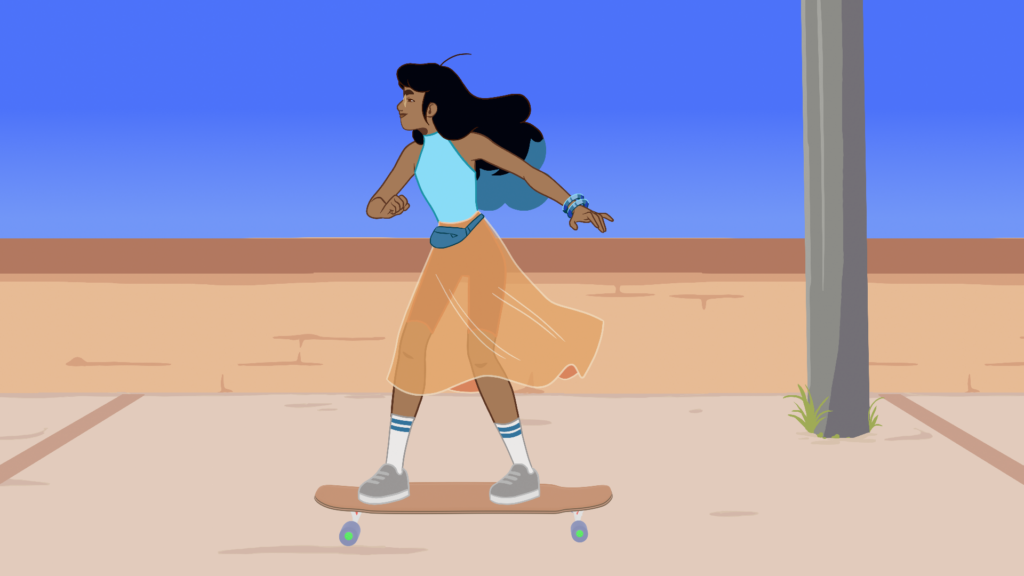
This article exists in French / Cet article existe en français.
While working on algorithms and tools for 2D animation, you may come across common issues such as : how to test your algorithm ? how to compare your results to the state of the art method ? or even, how to share your results with the community ?
If you work at a studio, you may have such animation stored somewhere, but it might not be suited for the task you want to test. Plus, you may not be allowed to share such sequences in a public way, which is an issue, if you want to present at a conference, illustrate your blog or code repository, or even publish a research paper.
Another solution is to create your own data for your specific test. This may be suited for fixed images or sketches. It is usually not very convenient for 2D animation, mainly because of the time and expertise required to create such content. Especially if you want to tackle some part of animation that is known to be difficult (animating hair or cloth, or making a turn for example).
Based on these observations, we though it would be useful for many people to have a common 2D animation sequence that would serve for testing and illustrating various programs and tools. We gathered a list of things that we wanted to find in such animation, and could serve multiple purposes.
- At least one fully animated character.
- Character not related to any IP existing.
- More characters around.
- Deformed cloth.
- Hairy character with motion in the hair when moving.
- Realistic hands animation.
- Animation that could benefit a good interpolation system.
- Slow subtle animation and fast animation.
- Variable stepping in the drawed keys in the main animation.
- 3D element animated with the character.
- Holes in the drawing.
- Overlay and Underlay animated elements.
- Vertex painting or NO vertex painting.
- Grease Pencil modifiers.
- FX.
- Textured brushes.
- At least position of the camera animated, parallax effect.
- Background made of Grease Pencil.
- Multiple color inking and painting.
- Light and shadow passes over the character.
- Shadow pass in the ground/walls.
- Lines can be disabled with a color pass that can work alone.
- Cycled animation.
- Soundtrack.
- Well-organized scene.
- Different steps : rough, clean, ink, color.
- Separated color layers as passes for the compositing.
- Animation notes, such as charts for cleaning by the animator.
- Scene packed to be available without external dependencies.
- A vanilla blender 3.4+ should be able to open it without add-ons.
Out of this list, we came up with the design of Billie, a short 2D animated sequence made with Blender grease pencil, and distributed with a CC-by license.
You can find the Blender file in our dedicated Gitlab repository : https://gitlab.com/lfs.coop/blender/open-sequences/billie. The file is made for Blender 3.4 and up.
Note that all of the requirements in the (long) above list are not satisfied by this sequence, which leaves room for future other open sequences that could be done in the future, maybe by you ?
As for now, let us explain what the animation file contains and how to use it.
Design
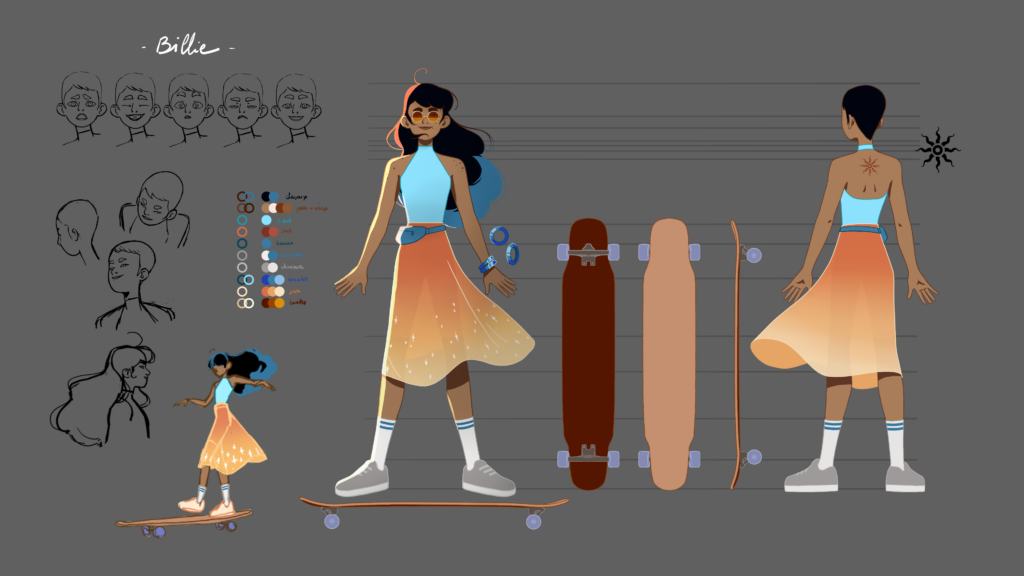
Here is the model-sheet of the animated character, Billie.
Billie is designed with many elements : hair, loose cloth, glasses and bracelet. These elements are animated on separate layers, which allows you to remove them if your test does not include them.
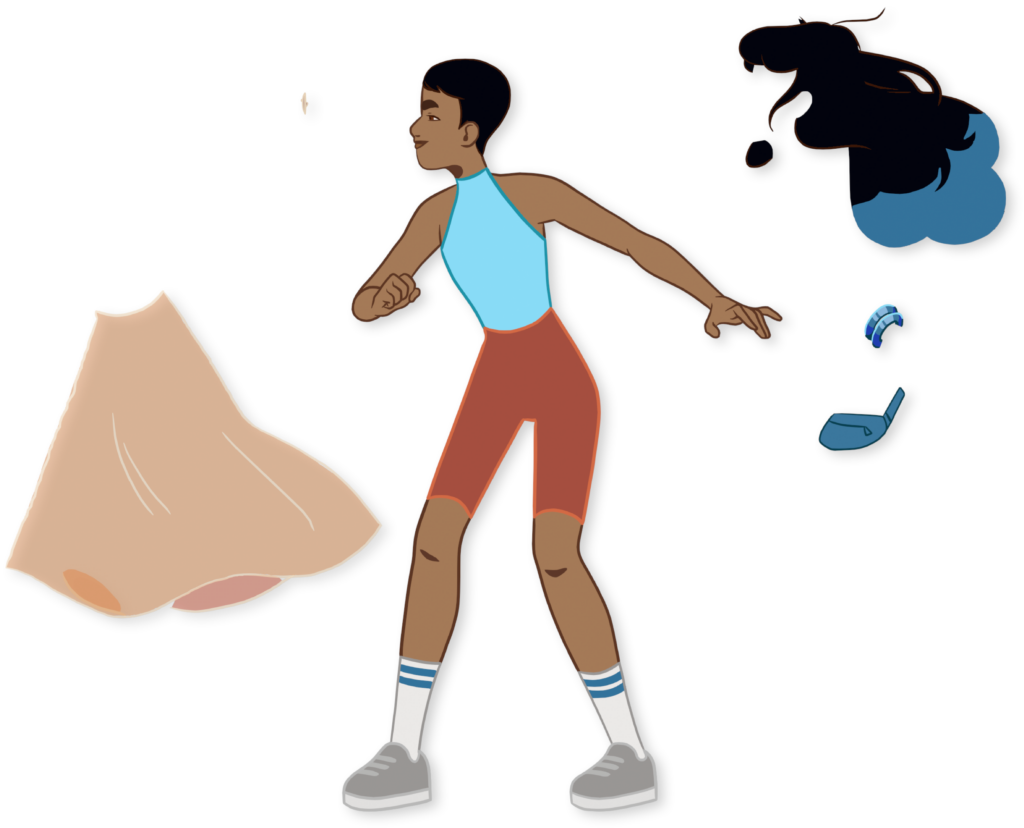
Note that the design of the character contains elements that are not in the animation, because of them being difficult to animate : the freckles, the sparkles on the dress, and the tattoo on the back. Part of the research work we do at the studio is to find ways to include these element in the animation more easily.
Animation
The animation is a cycle, containing 3 sub-loops so you can focus your demo on a specific part if needed. You can also assemble your own animation based on this small loop elements.
File
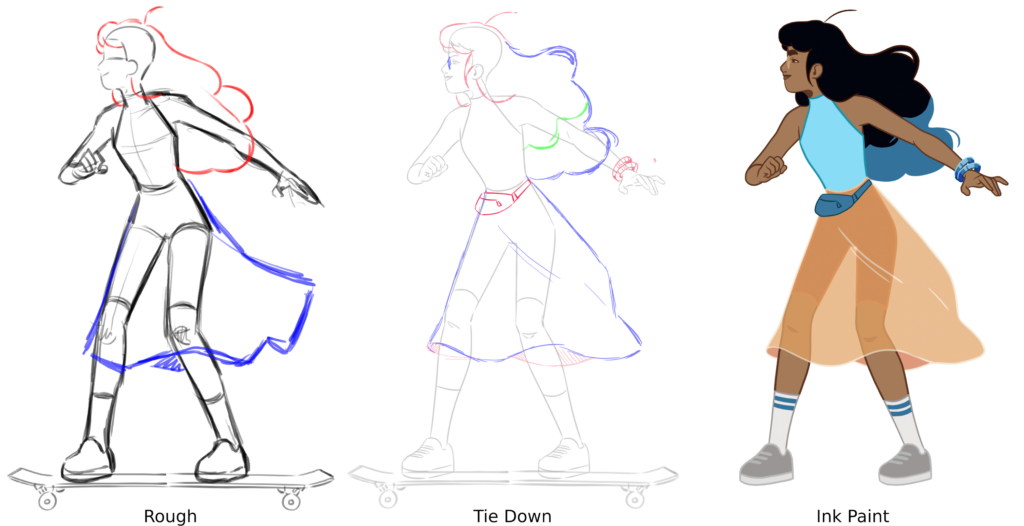
The Blender scene comes with all the steps of fabrication in it. Here are all the different objects contained in the file.
- ROUGH: first rough steps of animation, including notes and doodles.
- TIE-DOWN: a clean tie-down of the animation.
- COLOR-REF: just one clean keyframe used to set the materials needed to Ink and Paint.
- INK-PAINT: the final drawing (displayed by default).
- LONGBOARD: a 3D prop, animated and rigged.
- SETS/SKY: the set, with an array modifier.
Note that the ink-paint object is parented to the long-board object, you can mute its animation if needed.
Materials
The file contains an organized set of grease pencil materials used for the ink & paint step. Materials are either line or fill. Line materials end with _line, while fill materials end with _fill, which allows you to easily filter them by name.
We also provide a material palette, suitable with our Grease Pencil Color Picker addon.

View Layers
We set up 5 different view layers to allow for a better export of the animation (for compositing purposes mainly) :
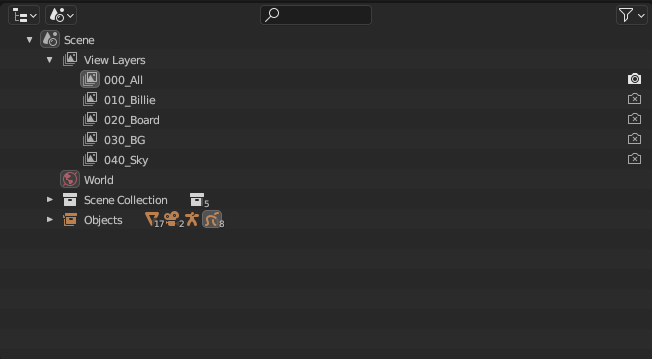
- 000_All : all of the elements listed below,
- 010_Billie : the animated character only,
- 020_Board : the longboard,
- 030_BG : the set (pavement and wall),
- 040_Sky : the background.
We also added a compositing node to export all of the view layers in separate files.
Note that by default, both the compositing and the rendering of most view layers are disabled, so that you can easily render an image with all the elements in it. In order to get the rendering passes, you should : enable the compositing, and enable the rendering of each of the 010+ view layers.
Data
If you want to export grease pencil data, or just do some computation directly in the file, we provide a template python file that shows how to loop through the content of a grease pencil object and get the coordinates of the vector strokes. It is also included inside of the Blender file, you can open the “Scripting” workspace to see it.
You can refer to the API documentation for further treatment : https://docs.blender.org/api/current/ .
Credits
Les Fées Spéciales.
- Design: Léa Cluzel
- Animation: Camille Guillot
- Ink & Paint: Coline Fournier
- Technical Support: Damien Picard
- Production Manager: Natalene Darfeuille
- Administration: Gabriela de Carvalho
- Supervision: Amélie Fondevilla, Flavio Perez & Eric Serre
This scene is part of the our RnD program “Grease Pencil Powertools”, made possible with the support of the CNC.
1 Comment
Carsten
This is beautiful, looks great. Do you have a tutorial for drawing really clean lines?